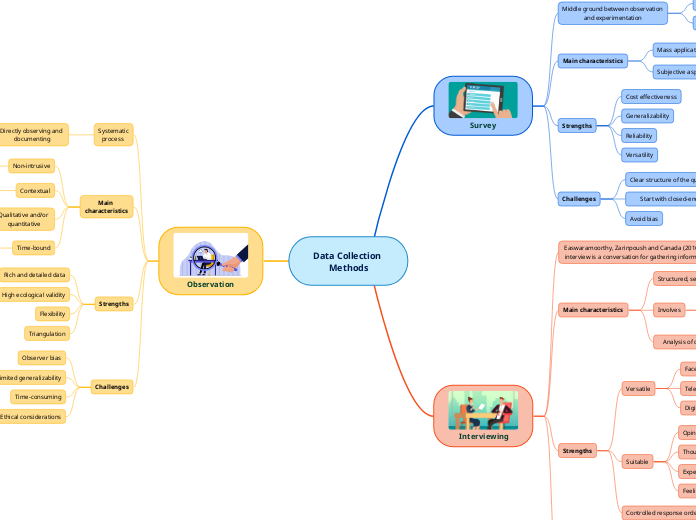Data Collection Methods

Survey
Middle ground between observation and experimentation
Observed situations are recorded
Absence of which the participant is questioned
Main characteristics
Mass application
Large data set
Subjective aspects
Strengths
Cost effectiveness
Generalizability
Reliability
Versatility
Challenges
Clear structure of the questions
Start with closed-ended questions and end with open-ended questions
Avoid bias

Interviewing
Easwaramoorthy, Zarinpoush and Canada (2016): "An interview is a conversation for gathering information"
Main characteristics
Structured, semi-structured or unstructured
Involves
Interviewer
Interviewee
Analysis of complex questions and considerable probing
Strengths
Versatile
Face-to-face
Telephone
Digital tool
Suitable
Opinions
Thoughts
Experiences
Feelings
Controlled response order
Challenges
Ineffective
Population is unwilling to answer
Responses cannot be generalized
Subconscious bias
Never 100% anonymous
Time consuming

Observation
Systematic process
Directly observing and documenting
Behaviors, events, or phenomena
Main characteristics
Non-intrusive
External observation
Contextual
Contextual information
Qualitative and/or quantitative
Qualitative aspects & Quantitative data
Time-bound
Specific time periods
Strengths
Rich and detailed data
High ecological validity
Flexibility
Triangulation
Challenges
Observer bias
Limited generalizability
Time-consuming
Ethical considerations
